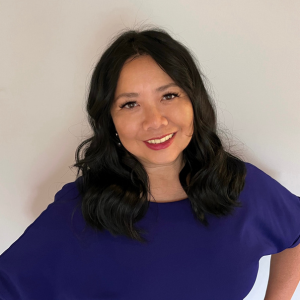Internal audits
Staying on top of ever-changing government regulations is one of the greatest challenges for long-term care facilities. Poor training often leads to inappropriate resident care and less than adequate documentation of services, resulting in fewer Medicare and Medicaid reimbursements dollars. Documentation drives payment, and proper documentation is critical to the right level of patient care. Coupled with heightened regulatory scrutiny and a continued shift toward transparency of healthcare quality outcomes and pay-for-performance, improving clinical and operating performance is imperative to sustaining a healthy resident care and financial environment.
Internal compliance audits are one of the best ways to keep pace with federal and state regulations, streamline operations, and recapture those much-needed Medicare and Medicaid dollars. They should focus on designating proper patient care and documenting it accordingly-two areas where most nursing homes falter because of staff turnover and a seemingly constant change in government regulations. An audit should mimic a licensing authority review given by auditors from agencies such as Centers for Medicare & Medicaid Services (CMS), Joint Commission, and the Recovery Audit Contractor (RAC).
The audit
Facilities should start with resident assessment that will ultimately define the patient’s level of care, duration, frequency, intensity of care, and per diem payment for a particular resident situation. Key areas of focus should include:
- Coordination of interdisciplinary team care and services
- Medicare payment system and Resource Utilization Groups (RUGs)
- Documentation to support medical necessity and intensity of services provided
Medicare benchmarking is important to the process. It is based on a quarterly report from CMS, looking at the 53 RUG categories, which measure complexity of resident services and staffing intensity as a way to categorize residents for Medicare payment. The RUG distribution is a good starting point, especially three resident management areas within it: rehabilitation, nursing, and levels of assistance with activities of daily living (ADLs). There’s a significant financial impact if facilities are not properly documenting how patients fall into appropriate categories. But be encouraged; the government is getting better at clarifying guidelines for reimbursement.
An effective internal audit will have skilled nursing facilities comparing their current situation to certain standards. Incorporate a benchmark on a regional, state, and national level based on detailed breakdowns of various Medicare payments on a daily basis. This analysis will allow facilities to see early warning signs for undesirable trends. The metrics drive significant financial gains with the focus being on Medicare management, not Medicare census. Share the findings with the Medicare team, so everyone understands the big picture and trains their eyes to catch improper documentation early.
The findings
Internal audit findings should be specific to the provider’s particular situation. The most common issues Medicare discovers are within:
- ADL capture and accurate documentation
- Therapy minutes accuracy (logs to the Minimum Data Set [MDS] to RUG category)
- Daily skilled documentation to support medical necessity and level of services provided
- Proof of extensive services qualifiers
In long-term care surveys, the following concerns have been raised surrounding compliance:
- Resident safe-smoking policies
- Accident and incident prevention
- Avoidance of facility-acquired pressure ulcers
- Revised nutritional regulations
Many skilled nursing facilities (SNFs) only document or capture the amount of assistance a resident needs during the day shift. Often, the day shift is when residents are at their best because they are fully rested. It is not uncommon for a resident to need increased assistance getting to bed or moving up to the head of the bed. If the facility accurately captured the actual level of assistance provided in these cases on the night shift, the facility would have received an additional $23 to $49 per day. If a resident is in a 30-day payment window, that could net the facility an additional $690 to $1,470 in reimbursement just through more accurate documentation of the actual services provided.
Facilities often do not provide the education to the hands-on care staff to help them differentiate between limited assistance and extensive assistance levels of care. It is the hands-on care staff that truly knows how much assistance they actually provided to the resident throughout the day. A couple of different situations would involve helping a resident get in and out of bed or get out of a chair. The difference in “extensive services” requires staff to provide weight-bearing assistance. Weight-bearing assistance to a nurse’s aide is often understood as a “total lift” or requiring the aide to do most of the work with the transfer. This is not so. If the aide provides any percentage of weight-bearing assistance to the resident, such as hands-on assistance by supporting a fractured arm as the resident goes from a sitting to standing position, it would be considered extensive assistance. As a result, the facility would see similar financial benefits as listed in the first example. ADL training should be offered to all staff on all shifts. Once is not enough; it is an educational program that should be offered in orientation and repeated often. As with any training program, it is best understood if staff can relate levels of assistance to residents they know and work with regularly.
Missing out
In our clinical consulting, we often find that nursing facilities only receive the day of discharge medication administration sheets from the referring hospital. As a result, the SNF often misses out on capturing an extensive service qualifier such as an IV medication that was given during the look-back period. The financial impact of this could be significant, depending on the RUG category change and payment period. For example, a resident is admitted to the facility post-total knee replacement. While hospitalized, the patient received daily IV antibiotic medications until two days prior to the transfer to the SNF. The SNF is providing an ultra high level of rehab services and the resident requires extensive assistance with ADLs. The care would fall under the RUG category RUC at a rate of $528.85 per day. If the SNF aggressively sought hospital records, the patient would have scored a RUX at a rate of $622.93 per day. This could have netted the SNF an additional $1,317.12 for the five-day MDS period and potentially $2,822.40 if the patient scored a RUX for the 14-day MDS as well.
After proper training, SNFs should see enhancements almost immediately, but they should continue to monitor the compliance “implementation” to ensure the changes continue. Steps should be taken for periodic reviews of operations to track results of the implementations and evaluate the need for ongoing training programs.
Year of change
Skilled nursing facilities have new Medicare patient documentation requirements this year. Compliance is attainable through internal audits and staff training. Preparing for the inevitable government regulatory change will help to improve resident care, increase revenues, and stay competitive in an ever-evolving industry.
Nancy Truver, RN, BSN, MS, is Vice President and Manager of Clinical Concepts at GE Healthcare Financial Services, which provides advisory services to healthcare organizations and skilled nursing facilities. Ms. Truver specializes in identifying quality of care and regulatory compliance improvement opportunities. She brings more than 20 years of experience in the healthcare industry, both as a nurse and health system administrator. She can be reached at (225) 257-4176 or nancy.truver@ge.com.
Reference
Sidebar
At a glance…
Internal compliance audits are one of the best ways to keep pace with federal and state regulations, streamline operations, and recapture Medicare and Medicaid dollars. They should focus on designating and documenting proper patient care.
Long-Term Living 2009 August;58(8):29-31
I Advance Senior Care is the industry-leading source for practical, in-depth, business-building, and resident care information for owners, executives, administrators, and directors of nursing at assisted living communities, skilled nursing facilities, post-acute facilities, and continuing care retirement communities. The I Advance Senior Care editorial team and industry experts provide market analysis, strategic direction, policy commentary, clinical best-practices, business management, and technology breakthroughs.
I Advance Senior Care is part of the Institute for the Advancement of Senior Care and published by Plain-English Health Care.
Related Articles
Topics: Articles , Facility management , Risk Management











